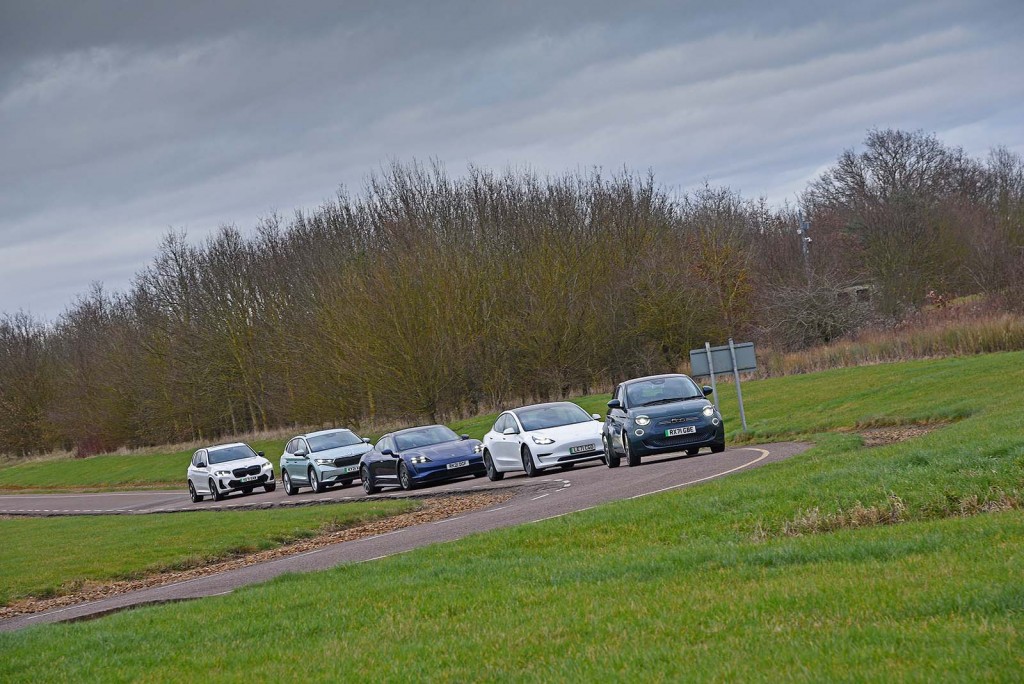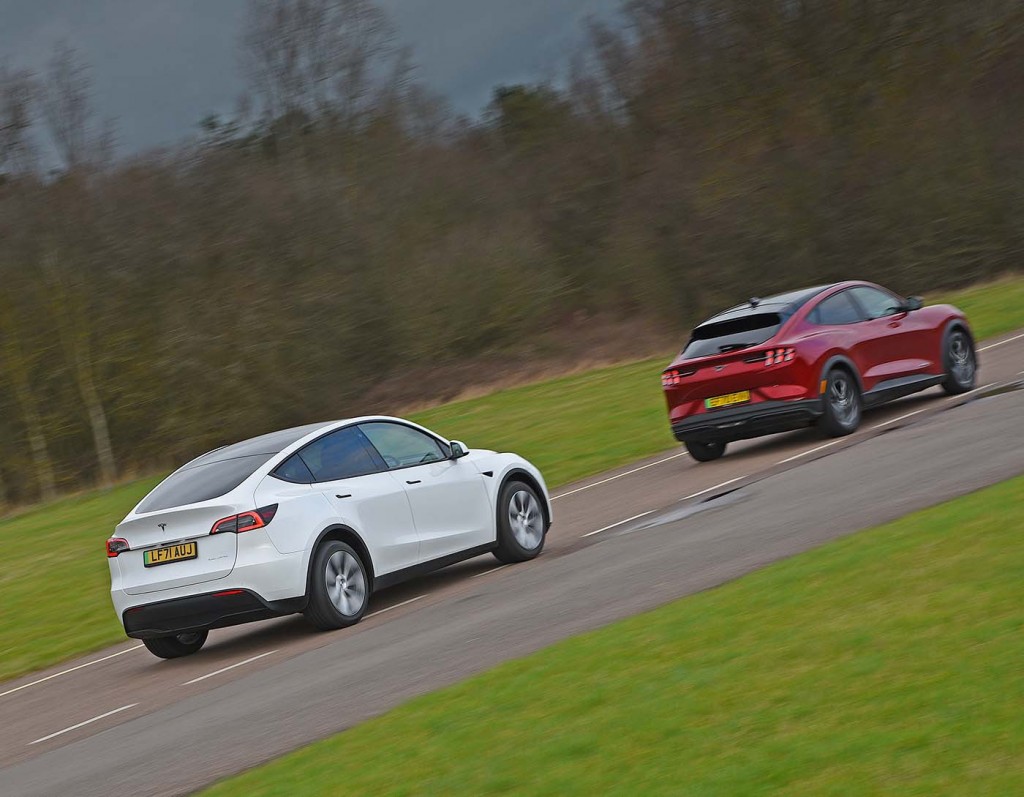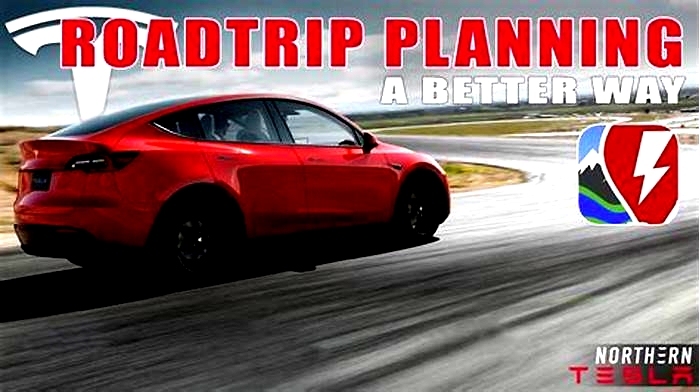What happens if my electric car runs out of power on the road

What happens when an electric car runs out of battery charge?
Just like running out of fuel in a conventional car, letting your EVs battery run flat should be avoided if possible. The headache it causes will be major and could affect the long-term health of the battery.
Indeed, with an electric car, there will be no friendly good Samaritan with a can of kilowatts to pour into your tank. Or give you a quick jump-start. Your vehicle may need to be lifted onto a flat-bed trailer and towed to a charging point.

You will then have another inconvenient delay before the batteries have charged sufficiently to continue your journey.
How likely are EVs to run out of charge?
Frankly, the chance of being left stranded should be slim. The range display or battery gauge on the dashboard will give you plenty of warning, and your sat-nav, Google Maps or the Zap Map app will point you to the nearest charging point when you need it.
The majority of electric cars also have an integrated de-powering system. If the electronics detect you are close to running flat, the power available to drive the car will be decreased and its speed limited. This should give you the best possible chance of reaching a charging point.
CanI tow an electric car?
Many electric cars cant be towed in the old-fashioned sense, with a rope or bar behind another vehicle. This is because of how the electric motors are connected to the wheels, including the absence of a neutral gear.
Some modern EVs do have a tow mode, but most need to be loaded onto a flatbed trailer. Some can also be towed on a dolly where the front wheels are raised and the rears remain on the road. Check your cars handbook carefully before taking action.
What happens if my EV battery runs flat?

Breakdown recovery companies have responded to the growth of electric cars. RAC patrol vans, for example, are now fitted with a lightweight 5kW electric car chargers that give a 10-mile boost help drivers reach the next charging point.
A spokesman told Motoring Electric the EV Boost service can also be deployed if motorists reach a charger, discover its faulty, and dont have enough charge to reach another charger.
It doesnt require the vans to lug around heavy batteries, either. Power is generated from a second alternator fitted to the engine. The 10-mile top-up could take just 10 minutes by the roadside.
Vans carry EV Boost branding and a bright green logo. This alone, hopes the RAC, might play a part in helping motorists overcome range anxiety, by knowing help is at hand in an emergency.
ALSO READ:
What are the downsides of a used electric car?
Can I charge an electric car using a three-pin plug?
How accurate is the official range of electric cars?
What Happens If You Run Out of Power While Driving an EV?
AAA ran a roadside assistance program years ago where some of its trucks were equipped with level 2 and even DC-fast chargers, and they could provide enough of a charge to get you to the nearest charger, says Knizek. But few people used the program and it wasnt a practical solution, so they phased it out. However, as EVs become more common we wouldnt be surprised to see these types of programs resurface. That said, an EV wont just stop without advanced warning. Drivers get plenty of heads-up when the battery runs low, and if its low enough, the car will reduce propulsion power. Some EVs will even have the navigation system display the closest public chargers and guide you there.
Range anxiety can be a powerful motivator for keeping a fair amount of power on reserve, just in case. There are also phone apps, like PlugShare, that work in the same way. And each network, like ChargePoint and Electrify America, has its own app. EVs with built-in navigation systems will often show an estimated level of remaining battery charge when the vehicle arrives at a destination.
For daily use, even this is becoming far less of a concern as the range increases with newer models. There are hardly any new EVs that have less than a 250-mile range. (See CRs full list of the range for todays EVs.)
If range anxiety is preventing you from considering an EV, another good option is a plug-in hybrid. You can use electric around town, usually for 25 to 35 miles, and gasoline for longer trips. The gas engine also serves as a safety net for those who are worried about being stranded in an EV. These effectively split the difference between a regular hybrid and a pure electric vehicle.
This article has been adapted from an episode ofTalking Cars.
What happens when an electric car runs out of battery?
Audi Q4 e-tron
When the Audi hit 0% charge the speed remained constant and the cars was able to accelerate, although it was more challenging to gain speed. There were a number of warnings on the digital driver display telling you to stop and charge, with one message stating that performance was limited.
The Q4 was able to travel a reasonable distance before the throttle became unresponsive and the car slowed to a safe stop. The power steering was still functional and back-up power supply meant the digital screens and lights remained on to help you stop safely.

BMW iX3
After indicating zero miles of range the iX3 was able to maintain a high speed could even reach achieve 70mph, although power inputs were heavily reduced. Thankfully the car gave plenty of warning and once the battery was fully depleted the car rolled to an undramatic standstill.
All systems and power systems worked once the car stopped.

Fiat 500
The air conditioning shut off when the range in the 500 dropped to zero, but the car managed to soldier on for around half-a-mile at a reduced speed.
Warnings to stop were clearly displayed, although the car did come to a more abrupt halt than others, meaning there wasnt much time to move the car off to a safer position. The car would no longer engage drive and had to be winched when being recovered from the proving ground circuit.
Ford Mustang Mach-E
Like most of the electric cars involved in the test, the Mach E displayed a number of messages to stop and charge.
Once 0% was displayed, the car managed a whole loop of the 15-mile test circuit at varying speeds but when it was about to go for another run the car was unresponsive. Power steering was unoperational, although some systems remained.
Kia EV6
Power was restricted when the EV6 battery ran out of charge, but the car did hold a steady speed and was able to travel at around 60mph for a mile or two after displaying 0%. The Kia slowed down incrementally and around 20mph started to bring itself to a stop, losing power steering as it did so.

MG 5
Once the MG 5 reached zero miles of range it was able to keep going, but the top speed was capped at 50mph. The car was able to continue travelling for a surprisingly long time, well after the range indicator had disappeared.
When the MGs battery was fully depleted a red message appeared on the dash, with the car becoming unresponsive and slowed down gradually to a safe stop. The power steering was unoperational, but the ancillary electrics still worked.
Porsche Taycan
The Taycan provides more than enough warning even before it hits 0% charge, with a large red notification reminding you to stop and charge the car. After showing no charge the car became more sluggish and a small tortoise symbol appeared on the driver display showing that the car had limited power, although the speed was not limited.
After a few more miles the Taycan began to decelerate and did not respond to any throttle input. It slowly dropped its speed allowing for plenty of time to pull over. Power steering remained as did the digital driver display and headlights.

Skoda Enyaq
A myriad of warnings and notifications popped up when the Enyaq reached 0%, but the car was still able to maintain its speed and could achieve 70mph. After a short while the Enyaqs top speed dropped to 50mph before the car finally gave up its pursuit and rolled to a halt safely.
Electrically assisted systems such as the power systems were still operational making it easier to recover.
Tesla Model 3
In the Tesla Model 3 a number of on-screen warnings pop up to urge you to stop and charge. There was a clear reduction in performance and speed with further audible warnings to stop.
As a last ditch attempt to urge the driver to take action, the infotainment screen started to flash red before the car eventually lost power and rolled to a halt.

Tesla Model Y
Like its smaller sibling, the Model Y flagged up a number of warnings to stop on the infotainment screen but was still able to climb to 70mph despite showing 0% charge. The car then reduced speed and the headlights switched off.
The Model Y is fitted with a towing mode which allows the car to be moved when the battery is flat, although power steering is lost making it harder to manoeuvre.
How to avoid running out of charge in an EV
The takeaway from this exercise is that electric cars will give you ample warnings that theyre losing power, giving you the opportunity to take action to avoid slowing to a halt. Models that maintained some power to the car once the batteries were out of charge arguably performed better as key components such as the power steering remained operational, making them far easier to recover.
Of course, the best advice is not to run out of charge in the first place. So here's some helpful tips to prevent that.
When travelling a long distance it is best to plan ahead and pinpoint a number of places where you may be able to charge your car. If youre planning a longer journey with limited charging opportunities use the cars eco mode, and use the maximum level of regenerative braking if you have the option.

With a number of apps available displaying the location of electric charging points, planning a journey is an uncomplicated process and should help to avoid being stranded by the side of the road with a dead battery.
You can also extend the battery life by switching off systems within the car such as the heater and radio. Although only a simple task it can eek out a few more miles if you fear the onset of range anxiety. Weight is also an important factor, therefore by removing any unnecessary items can help to gain a few extra miles.

In the event you do run out of charge contact your recovery provider. Some now have small battery charging units in their service trucks that can give you a boost to get going again. If that isnt an option, you may have to request a flatbed truck to collect your vehicle. Some electric cars cannot be towed due to their regenerative braking components.
READ MORE
Subscribeto the Move Electric newsletter
e-CARS
E-cars news and reviews
New Volkswagen ID Buzz: everything you need to know
Citron -Berlingo review
How efficient are electric cars?
e-BIKES
E-bike reviews and news
Dawes Arc II e-bike review
Ducati expands e-bike range with first racing machine
e-MOTORBIKES
E-motorbike reviews and news
New Yamaha Neo is Europe-bound '50cc equivalent' electric moped
Electric Motion Epure Race e-motorbike review
e-SCOOTERS
E-scooter news and reviews
Eskuta KS-450 e-scooter review
Taito unveils innovative new three-wheeled electric scooter
e-WORLD
E-world news
Electric surfboard firm Awake aims to make waves with first e-foil
Volta Zero electric truck can 'dramatically improve' inner-city road safety
What happens if your EV runs out of battery power?
Q: What happens if your electric car runs out of battery?
A: A modern EV wont just suddenly stop in the middle of the road if it runs out of charge. While its tempting to think than an electric car flat battery is the same as an empty fuel tank in a conventional car, an EV is actually a bit smarter than that.
It will try to protect its occupants and other road users if the unthinkable happens and its in danger of depleting its batteries.
Even so, many would-be EV owners find themselves asking what happens if my electric car runs out of power.
Different manufacturers have different protocols for what happens when the batteries are empty, but they all have strategies along similar lines. So, lets look at precisely what happens when a Hyundai Ioniq threatens to run out of volts.
When the vehicles battery has dropped to 10 per cent of its capacity, the driver gets a warning light to alert them of the fact (similar to a petrol or diesel cars low-fuel warning light).
Download the EVGuide Report, 2022
Australia's one-stop snapshot of all things relating to electric cars.
Download for freeAt that point, the vehicle goes into preservation mode and should still have between 30 and 40km of range depending on the driving speed, terrain, ambient temperature and what accessories are also running (such as the air-conditioning and lighting).
Part of that preservation mode may include switching off the 'creep' function, so the vehicle may roll back on a hill when the battery is this low.
From there, the car basically does everything it can to get you to a charging point, and it does so by simply winding back the power (and therefore, the performance) as it gets ever closer to zero charge.

 When a vehicles battery drops to 10 per cent of its capacity, the driver will get a warning light to alert them of the fact. (Image: Tom White)
When a vehicles battery drops to 10 per cent of its capacity, the driver will get a warning light to alert them of the fact. (Image: Tom White)
The idea is that limping slowly into a charge point is better than not making it at all. Drivers of conventional cars often do the same thing when theyre in danger of running out, but in the EVs case, the car does the thinking for you.
But what then? What if you just cant make it to a charging point? At that point, the vehicle will as will any vehicle with no fuel in it come to a stop. Hopefully, the driver has made use of the cars help and has at least managed to roll somewhere safe.
Once the batteries are dead flat, you have choices to make. In some states, the local motoring clubs are trialling service vans with portable charging stations on board.
But even in those states, the specialised vans are not in all locations. If thats not available, the motoring club will tow your EV to a charging station as part of a normal roadside service contract. If you have access to your own portable charging station, that will work, too.
Another option if youre travelling with another compatible EV is car-to-car charging. Hyundais EVs are set up to allow for this, but not all EVs are. The Ioniq models from Hyundai are capable of providing charge for another stranded (rechargeable) EV, and can themselves accept charge from another EV.

 It is best to avoid letting your EV completely run out of charge. (Image: Tom White)
It is best to avoid letting your EV completely run out of charge. (Image: Tom White)
You may also have heard of tow-charging, whereby an EV can be charged while it is being flat-towed (towed with its wheels on the ground).
This was the party trick of the Rivian SUV EV, and while Hyundai says its EVs are capable of this in 'Ready' mode, Hyundai head office hasnt officially sanctioned this practice.
The other big question is whether running an EVs batteries completely flat is harmful to them or any other aspect of the car.
The good news is that, no, you wont do any damage as the vehicle will shut down before it gets to that point. Still, its never a good idea to let an EV run out of charge.
Thats because for maximum battery life, the recommendation is to keep the batteries charged to between 20 and 80 per cent of capacity all the time.
You can charge to 100 per cent capacity if you need the range, but if you dont, then stop at 80 per cent. Battery makers suggest that continually cycling batteries between zero and 100 per cent can reduce their long-term efficiency and lifespan marginally.









